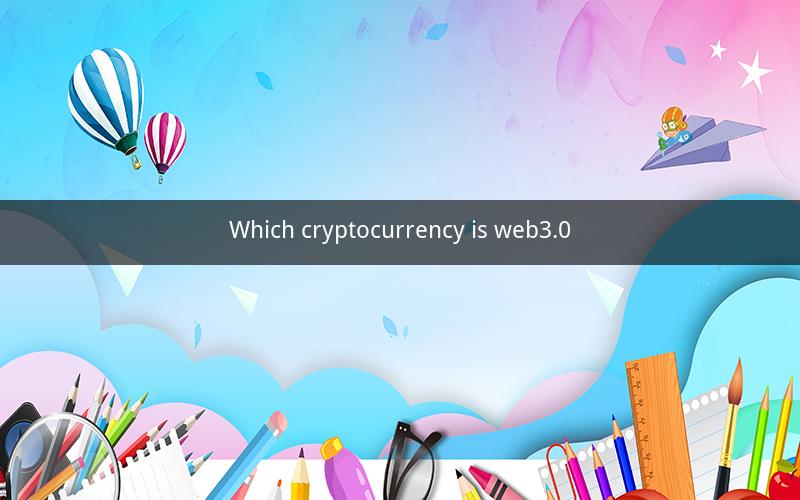
Understanding Web3.0 and its Cryptocurrency
Table of Contents
1. Introduction to Web3.0
2. The Role of Cryptocurrency in Web3.0
3. Top Cryptocurrencies for Web3.0
3.1 Ethereum
3.2 Binance Smart Chain
3.3 Polkadot
3.4 Cardano
3.5 Solana
4. The Future of Cryptocurrency in Web3.0
5. Conclusion
1. Introduction to Web3.0
Web3.0 is the next iteration of the internet, aiming to decentralize the web and empower users by giving them control over their data and interactions. Unlike the current internet infrastructure, which is controlled by a few major companies, Web3.0 is built on decentralized networks and blockchain technology. This new era of the internet is characterized by its emphasis on decentralization, user sovereignty, and the integration of cryptocurrencies.
2. The Role of Cryptocurrency in Web3.0
Cryptocurrency plays a crucial role in the Web3.0 ecosystem. It serves as the currency for transactions, incentivizes participation in decentralized applications (dApps), and enables the creation of new digital assets. Cryptocurrencies are essential for the functioning of the decentralized finance (DeFi) sector, which is a cornerstone of Web3.0.
3. Top Cryptocurrencies for Web3.0
3.1 Ethereum
Ethereum is the first and most well-known blockchain platform that supports smart contracts, enabling the creation of decentralized applications. As the foundation of the Web3.0 ecosystem, Ethereum has a strong community and a vast array of dApps built on its platform. Its native cryptocurrency, Ether (ETH), is widely used for transactions and as a collateral for various DeFi services.
3.2 Binance Smart Chain
Binance Smart Chain is a high-performance blockchain platform designed to support the development of decentralized applications. It offers fast transaction speeds and low fees, making it an attractive choice for developers. The platform's native cryptocurrency, Binance Coin (BNB), is used for transaction fees, staking, and governance purposes.
3.3 Polkadot
Polkadot is a unique blockchain platform that aims to connect multiple blockchains into one unified network. This interoperability allows for seamless communication between different blockchains, making it an essential component of the Web3.0 ecosystem. Polkadot's native cryptocurrency, DOT, is used for governance, staking, and facilitating the transfer of assets between blockchains.
3.4 Cardano
Cardano is a blockchain platform that focuses on scalability, sustainability, and security. It is designed to support a wide range of decentralized applications and is built on a peer-reviewed research foundation. The platform's native cryptocurrency, ADA, is used for transactions, staking, and governance.
3.5 Solana
Solana is a high-performance blockchain platform known for its rapid transaction speeds and low fees. It is designed to support the development of decentralized applications and is gaining popularity among developers. The platform's native cryptocurrency, SOL, is used for transactions, staking, and governance.
4. The Future of Cryptocurrency in Web3.0
The future of cryptocurrency in the Web3.0 ecosystem is promising. As more people adopt decentralized applications and the internet becomes increasingly decentralized, the demand for cryptocurrencies will likely increase. This will drive the development of new blockchain platforms and the creation of new digital assets. The integration of blockchain technology into various industries, such as finance, healthcare, and supply chain, will also contribute to the growth of the cryptocurrency market.
5. Conclusion
In conclusion, the role of cryptocurrency in the Web3.0 ecosystem is undeniable. As the internet evolves towards a more decentralized and user-centric model, cryptocurrencies will play a crucial role in facilitating transactions, incentivizing participation, and enabling the creation of new digital assets. The top cryptocurrencies for Web3.0, such as Ethereum, Binance Smart Chain, Polkadot, Cardano, and Solana, are at the forefront of this technological revolution.
Questions and Answers
1. Q: What is Web3.0?
A: Web3.0 is the next iteration of the internet, aiming to decentralize the web and empower users by giving them control over their data and interactions.
2. Q: How does cryptocurrency play a role in Web3.0?
A: Cryptocurrency serves as the currency for transactions, incentivizes participation in decentralized applications, and enables the creation of new digital assets.
3. Q: What is Ethereum?
A: Ethereum is the first and most well-known blockchain platform that supports smart contracts, enabling the creation of decentralized applications.
4. Q: What is Binance Smart Chain?
A: Binance Smart Chain is a high-performance blockchain platform designed to support the development of decentralized applications.
5. Q: What is Polkadot?
A: Polkadot is a unique blockchain platform that aims to connect multiple blockchains into one unified network.
6. Q: What is Cardano?
A: Cardano is a blockchain platform that focuses on scalability, sustainability, and security.
7. Q: What is Solana?
A: Solana is a high-performance blockchain platform known for its rapid transaction speeds and low fees.
8. Q: What is the future of cryptocurrency in Web3.0?
A: The future of cryptocurrency in Web3.0 is promising, with increasing demand for cryptocurrencies and the development of new blockchain platforms.
9. Q: How will the integration of blockchain technology into various industries contribute to the growth of the cryptocurrency market?
A: The integration of blockchain technology into various industries will contribute to the growth of the cryptocurrency market by increasing the demand for cryptocurrencies and facilitating new use cases.
10. Q: Why are cryptocurrencies essential for the functioning of the decentralized finance (DeFi) sector?
A: Cryptocurrencies are essential for the functioning of the DeFi sector as they serve as the currency for transactions, incentivize participation in dApps, and enable the creation of new digital assets.